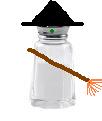Salt, or sodium chloride, has been used by humans since the middle ages. It allowed humans to preserve foods for many months and allowed it to travel over long distances. It really increased our food supply. Salt also became a seasoning, as it enhances the flavors of other foods, and this is mostly how we use it today. Some salt is iodized, and was promoted greatly in the 1920’s as a way of preventing goiter, which was a widespread health problem in the United States during that time. Salt is very inexpensive today, but this was not always the case.
 Salt, and more specifically, the sodium part of sodium chloride, has come under some scrutiny recently. As most of you are aware, America’s health is pretty poor, soaring rates of obesity, heart disease, diabetes, etc. This epidemic is on everyone’s radar from insurance companies, politicians, government agencies, drug companies, and even food companies. But, you may ask, why sodium? Sodium is a mineral that is essential to humans in nominal quantities. We can usually get enough sodium through vegetables, meats, beans, nuts/seeds, and fruits in their natural form. But as with lots of things, Americans seem to be over-consuming sodium, in such amounts that can be detrimental to health. Excessive sodium intake can increase risk for high blood pressure and heart disease, among other things. Another problem with our sodium intake is that we are not consuming enough potassium. Sodium and potassium are meant to be consumed by humans in a roughly 1:3 ratio, respectively, but a average American diet is quite the opposite, and likely worse. We are probably eating 5 times as much sodium as potassium. Its pretty apparent to me the reason…Americans are eating more and more processed foods and less of fresh fruits and vegetables, which are our main sources of potassium.
Salt, and more specifically, the sodium part of sodium chloride, has come under some scrutiny recently. As most of you are aware, America’s health is pretty poor, soaring rates of obesity, heart disease, diabetes, etc. This epidemic is on everyone’s radar from insurance companies, politicians, government agencies, drug companies, and even food companies. But, you may ask, why sodium? Sodium is a mineral that is essential to humans in nominal quantities. We can usually get enough sodium through vegetables, meats, beans, nuts/seeds, and fruits in their natural form. But as with lots of things, Americans seem to be over-consuming sodium, in such amounts that can be detrimental to health. Excessive sodium intake can increase risk for high blood pressure and heart disease, among other things. Another problem with our sodium intake is that we are not consuming enough potassium. Sodium and potassium are meant to be consumed by humans in a roughly 1:3 ratio, respectively, but a average American diet is quite the opposite, and likely worse. We are probably eating 5 times as much sodium as potassium. Its pretty apparent to me the reason…Americans are eating more and more processed foods and less of fresh fruits and vegetables, which are our main sources of potassium.
So, again, instead of promoting less processed foods and dining out, the FDA is being urged to target one nutrient, Sodium, and establish maximum levels for sodium that can be found in processed and restaurant foods. I agree that we eat too much sodium here in the United States, but I am not sure how forcing restaurants and food manufacturers to decrease sodium levels is going to improve America’s blood pressure, heart disease, nor a list of other problems. Should we take table salt off the shelves as well? I have seen people put salt on a deli sandwich, which the bread and cheese alone would be 750mg of Sodium. They actually are adding more sodium. One tsp of salt contains 2400mg Sodium, which is the suggested level of intake for most people. We actually need much less than this, but the government doesn’t want to ruffle the feathers, or the dollars, of the food companies and restaurants. That’s big business!!!!
Okay, I will stop ranting and give you the numbers. The chart below indicates where the sodium is coming from in the standard American diet (SAD).
These percentages are not shocking to me at all, but maybe to some it gives a nice visual. The thing that is more shocking is the FDA’s recommendations based on this. I have listed them below based on their question: “What steps can I take to lower my salt intake?” Remember, these are NOT my recommendations. I will give my recommendations later.
- Eat more fresh fruits and vegetables.
- Consume foods that are rich in potassium. Potassium can help blunt the effects of sodium on blood pressure. The recommended intake of potassium for adolescents and adults is 4,700 mg/day. Potassium-rich foods include leafy, green vegetables and fruits from vines.
- Flavor food with pepper and other herbs and spices instead of salt.
- Choose unsalted snacks.
- Read food labels and choose foods low in sodium.
Okay, these aren’t bad recommendations, right? I agree with all of them. However, I still find it laughable. From the chart, anyone with a kindergarten education can see that most of the sodium in a standard American diet comes from processed and restaurant foods, but I didn’t see any of those mentioned in the FDA’s recommendations, did you? And, still we want them to regulate the sodium in these foods? Ha, ha, ha!!!
So, let me say what the FDA, USDA, and DHHS won’t: stop eating so much processed and restaurant foods, these contain obnoxious amounts of sodium. Let’s stop attacking wee little nutritents and start eating more whole foods from fruits, vegetables, lean meats, nuts and seeds. Sodium and ingredients like trans fats and high fructose corn syrup, that we may eat in excess and contribute to a host of problems, can be found in high quantities in processed foods. America, I will give it to you straight from the words of Michael Pollan: Eat food. Not too Much. Mostly Plants.

